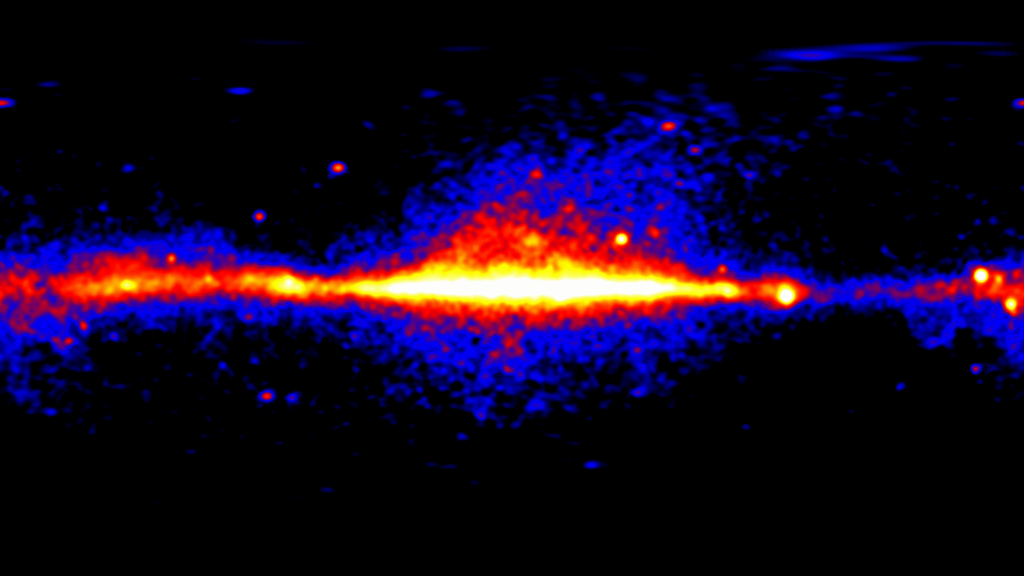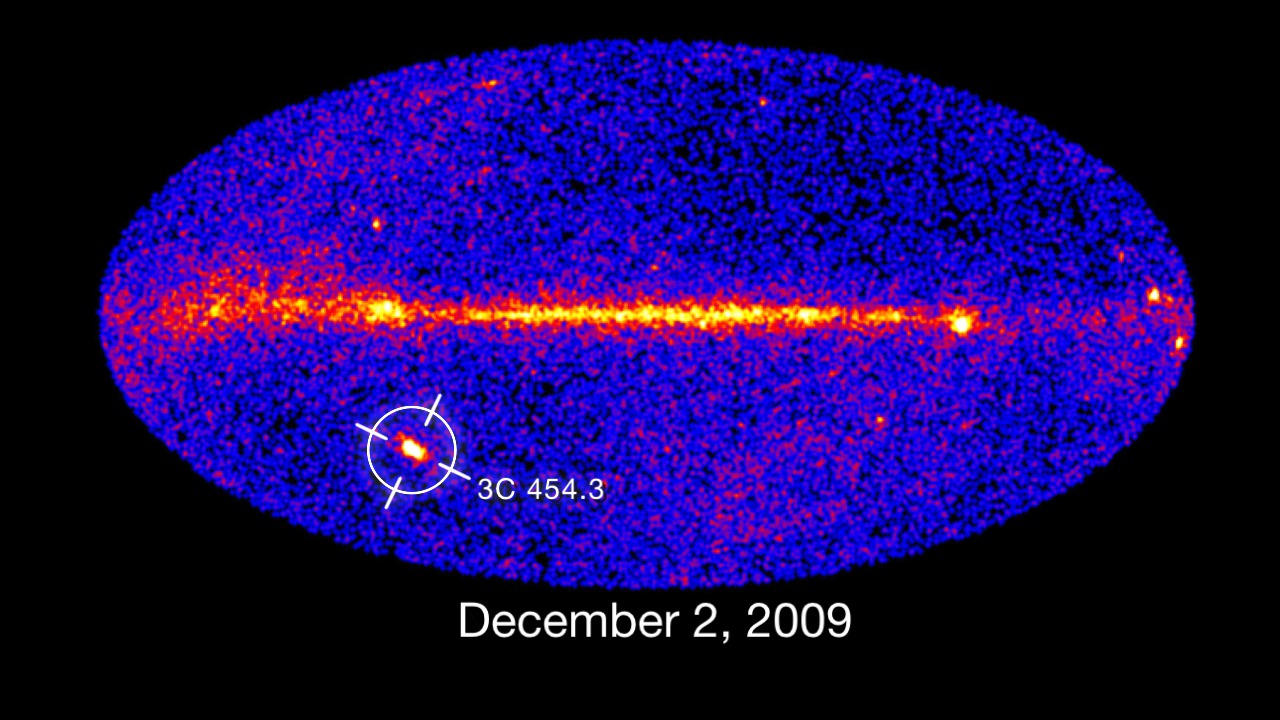Fermi All-sky Movie Shows Flaring, Fading Blazars
This all-sky movie shows counts of gamma rays with energies greater than 300 million electron volts from August 4 to October 30, 2008, detected by Fermi's Large Area Telescope. Brighter colors indicate brighter gamma-ray sources. The circles show the northern (left) and southern galactic sky. Their edges lie along the plane of our galaxy, the Milky Way.
Because this is an unusual view of the sky, the movies first overlay the stars and establish the locations of well- known constellations: Ursa Major (which includes the Big Dipper), Boötes, and Virgo in the northern galactic map; Cetus, Aries, and Pegasus in the southern galactic map. Notable gamma-ray sources include the sun (moving through the northern sky), the gamma-ray-only pulsar PSR J1836+5925 — a member of a new pulsar class discovered by Fermi — and numerous blazars (active galaxies). The blazars 3C 273, AO 0235+164, and PKS 1502+106 are highlighted.
This all-sky movie shows Fermi LAT counts of gamma rays with energies greater than 300 million electron volts from August 4 to October 30, 2008. Brighter colors indicate brighter gamma-ray sources. The circles show the northern (left) and southern galactic sky. Their edges lie along the plane of our galaxy, the Milky Way.
This all-sky movie shows Fermi LAT counts of gamma rays with energies greater than 300 million electron volts from August 4 to October 30, 2008. Brighter colors indicate brighter gamma-ray sources. The circle shows the northern galactic sky. Its edges lie along the plane of our galaxy, the Milky Way.
This all-sky movie shows Fermi LAT counts of gamma rays with energies greater than 300 million electron volts from August 4 to October 30, 2008. Brighter colors indicate brighter gamma-ray sources. The circle shows the southern galactic sky. Its edges lie along the plane of our galaxy, the Milky Way.
Looped Fermi all-sky map in the northern galactic sky.
Looped Fermi all-sky map in the southern galactic sky.
For More Information
Credits
Please give credit for this item to:
NASA/DOE/Fermi LAT Collaboration
-
Animators
- Jean Ballet (CEA Saclay)
- Cruz deWilde (Avant Gravity)
- Walt Feimer (HTSI)
-
Producer
- Stefanie Misztal (UMBC)
-
Scientists
- Jean Ballet (CEA Saclay)
- Elizabeth Hays (NASA/GSFC)
- Steven Ritz (NASA/GSFC)
-
Writer
- Francis Reddy (SPSYS)
Release date
This page was originally published on Friday, April 3, 2009.
This page was last updated on Wednesday, May 3, 2023 at 1:54 PM EDT.
Missions
This page is related to the following missions:Series
This page can be found in the following series:Datasets used
-
[Fermi: LAT]
ID: 216Fermi Gamma-ray Large Area Space Telescope (GLAST) Large Area Telescope (LAT)
This dataset can be found at: http://fermi.gsfc.nasa.gov
See all pages that use this dataset -
[Fermi]
ID: 687
Note: While we identify the data sets used on this page, we do not store any further details, nor the data sets themselves on our site.


